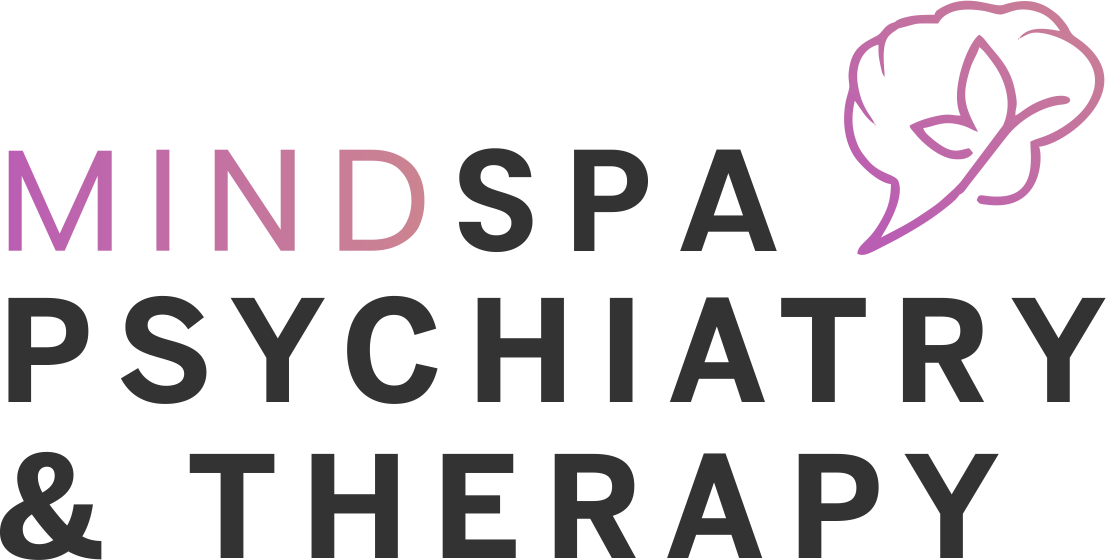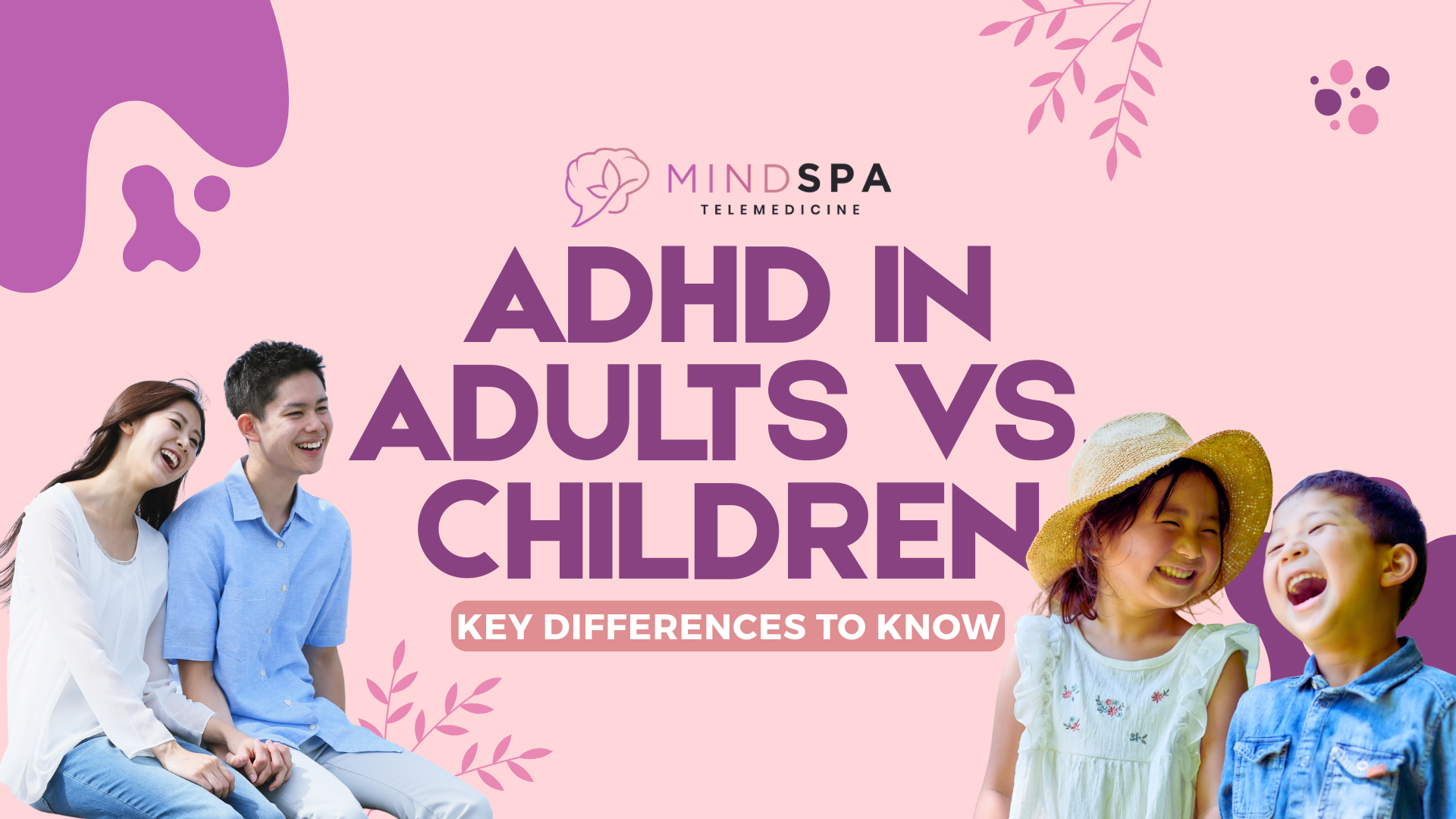Attention-Deficit/Hyperactivity Disorder is a disorder that can occur in any age group. Although commonly diagnosed during childhood, most individuals still exhibit the symptoms into adulthood. Studies indicate that approximately 60 percent of children with ADHD persist in exhibiting the symptoms when they become adults.
At MindSpa Psychiatry & Therapy, we dedicate time to ensuring that patients (both young and old) learn more about ADHD. This is the reason why we are currently providing TOVA tests, which are a clinically verified instrument that assists in measuring attention patterns. TOVA testing allows providers to have a better understanding and create treatment plans in a person-oriented manner.
ADHD in Children
ADHD can first be observed at tender ages of school. Teachers and parents can notice children who cannot sit down, pay attention to lessons, or do any assignments.
Common Symptoms in Children:
- Hyperactivity: Running around, climbing or moving around all the time even in the wrong environment.
- Impulsivity: Interrupting conversations, yelling out answers, or simply taking action without thinking.
- Inattention: Daydreaming, forgetfulness or trouble in following instructions.
School can be particularly difficult for children with ADHD. Homework may become a burden and they may not keep up with school work. They can also experience difficulties making or retaining friends due to impulsive issues.
According to one study, children with ADHD are over twice more likely to experience academic performance problems, as opposed to their non-ADHD counterparts.
Timely diagnosis and assistance matter. Children with ADHD can flourish with the proper treatment through medication, therapy and school accommodations.
ADHD in Adults
Although most individuals consider ADHD as a childhood disorder, it tends to continue into adulthood. The symptoms can change but will be effective. Adults are not necessarily physically hyperactive as children, but may feel a sort of inner restlessness.
Common Symptoms in Adults:
- Disorganization: Struggling to manage schedules, bills, or household responsibilities.
- Poor time management: Frequently running late or underestimating how long tasks will take.
- Difficulty focusing: Trouble completing work projects or staying engaged in meetings.
- Impulsivity: Quick decisions without reflection of the outcome, e.g. overspending.
- Relationship strain: Forgetting major dates or being distracted when the conversation is going on.
Adults having ADHD can even encounter anxiety, depression, or low self-image because of decades of living with the symptoms. Most of them complain that they feel different or they are behind others.
ADHD symptoms may become even more prominent by the demands of adult life: careers, finances, and family. Without treatment, these challenges may lead to stress, burnout, or unstable relationships.
Major Differences Between ADHD in Adults and Children
Although ADHD symptoms exist across the lifespan, the way they appear can differ significantly.
| Feature | Children | Adults |
|---|---|---|
| Hyperactivity | More visible hyperactivity (running, climbing, restless) | Inner restlessness, fidgeting, trouble relaxing |
| Sitting Still | Difficulty sitting still in classrooms | Difficulty sitting through long meetings |
| Performance | Academic struggles, incomplete homework | Job performance issues, missed deadlines |
| Impulsivity | Impulsivity in play or social settings | Impulsive decisions in work, money, or relationships |
| Self-Management | Rely on parents/teachers for structure | Must self-manage routines and responsibilities |
Diagnosis and Treatment
ADHD diagnosis may be lengthy and slow to assess. Teachers, parents, and children can play an important role. Self-reports and symptom history are important in adults.
The use of modern tools, such as the TOVA test, offers the provider with an objective method of assessing attention and response control. This helps in confirming ADHD and ruling out other disorders that can bear the same nature.
Treatment Options:
- Medication: Helps to normalize the brain chemistry and enhance attention.
- Therapy: Assists in regulating emotions, coping styles and relationship issues.
- Coaching or skills training: Coaches how to organize and manage time.
- Everyday routines: Workouts, sleep and routines may be adopted to alleviate symptoms.
Treatment of ADHD does not have a general way. The proper adjustment needs age, lifestyle, and personal challenges.
Supporting Children and Adults with ADHD
- In children: With positive reinforcement, with formed rules, with schedules, frustration can be eradicated. The accommodations which teachers can implement are assigning more time to finish assignments or sitting in front of the classroom.
- In adults: Planners, reminders, and digital tools can be utilized to balance responsibilities. Therapy and support groups also offer encouragement and accountability.
Children and even adults are the greatest beneficiaries when family and friends learn that ADHD is not laziness or lack of effort. It is a neurological manifestation that is very real and needs patience, empathy and therapy.
Final Thoughts
ADHD does not show its boundaries to childhood. The effects can be as great, but adults may manifest those problems in various ways. The first step that has to be made in understanding and supporting ADHD is to recognize the differences in the way the condition manifests itself at different ages.
In MindSpa Psychiatry & Therapy, we ensure that every patient feels acknowledged and respected. This is why we are currently providing the TOVA testing which provides patients and providers with a better understanding of attention deficits. Having the right diagnosis and treatment, individuals with ADHD, both children and adults can lead a healthy and balanced life.
Frequently Asked Questions
What are the 5 C's of ADHD?
The 5 Cs include Consistency, Compassion, Creativity, Collaboration and Celebration. These values promote orderly practices, generosity to self, innovative coping, collaboration with relatives or caregivers, and the commemoration of minor achievements in the ADHD process.
What is the 80/20 rule for ADHD?
According to the 80/20 rule, it would be better to do 20 percent of the work that produces 80 percent of the results. In case of ADHD, it is choosing the most urgent tasks rather than aiming to cope with all minor details simultaneously.
What is the 24 hour rule for ADHD?
The 24-hour rule helps individuals with ADHD to spend one entire day before making a significant action. This assists in decreasing the impulsive decisions and it allows time to pick them considering with awareness and tranquility.
Is ADHD a form of autism?
ADHD and autism are different disorders which overlap. The two are neurodevelopment disorders, which impair concentration, behavior, and social relations.
When does ADHD peak in boys?
In boys, ADHD symptoms usually reach their highest point at the age of 7-10, in particular, hyperactivity and impulsivity. Many of them also have attention problems well into adolescence and adulthood as they develop.

